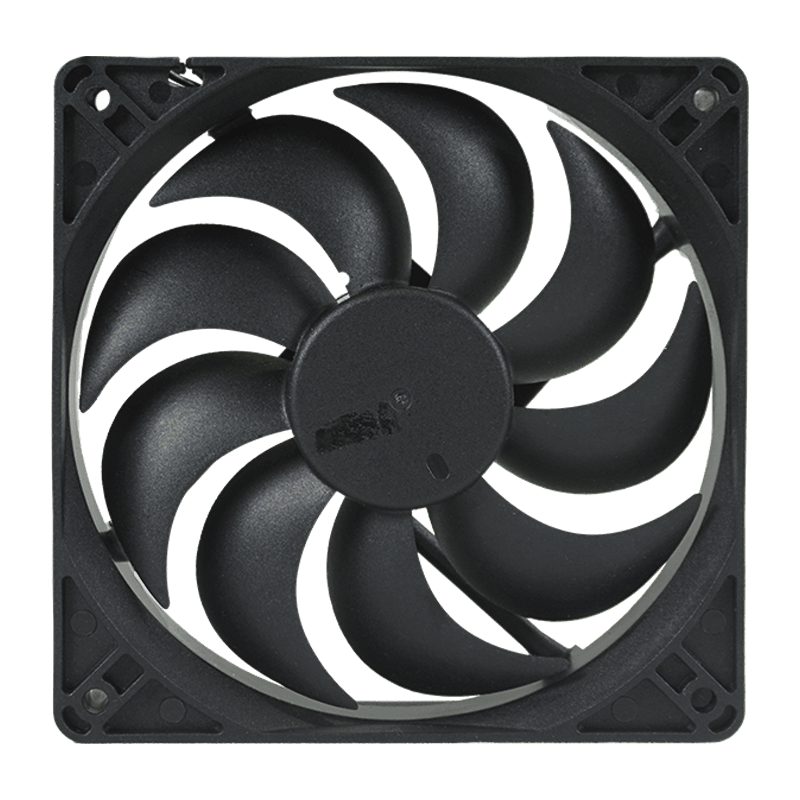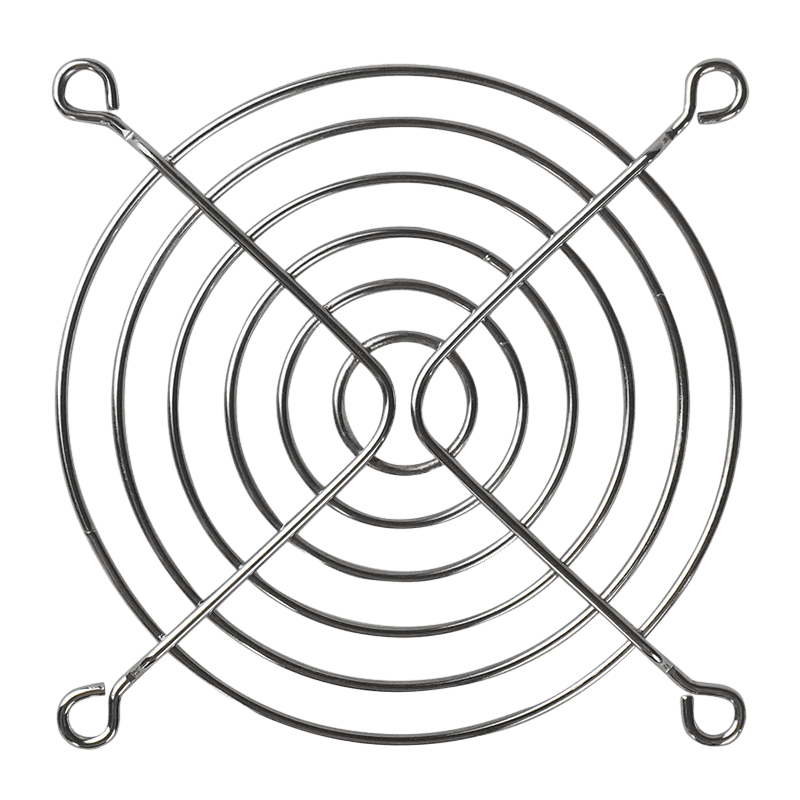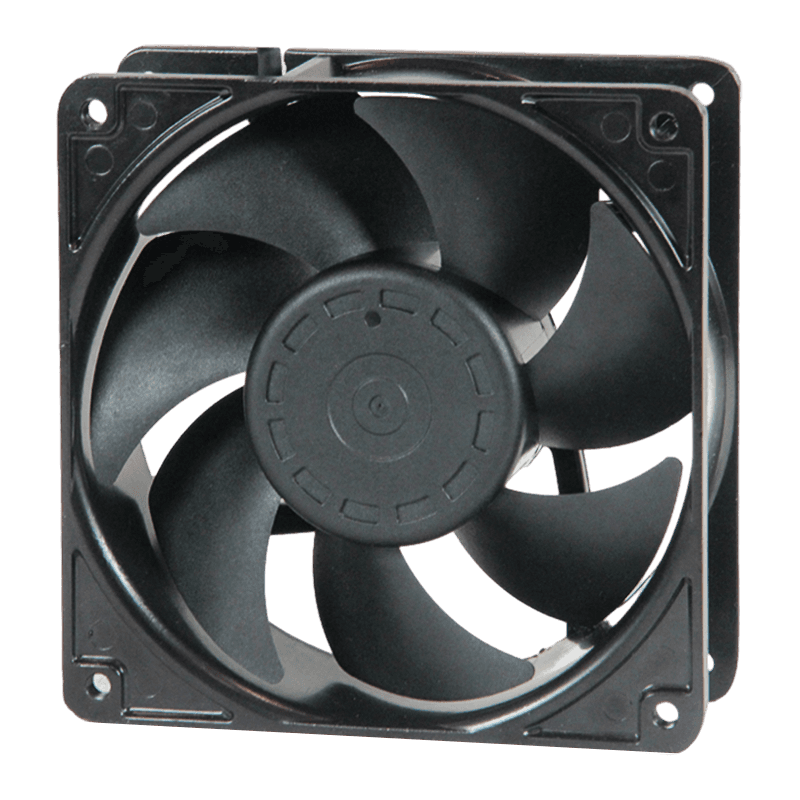The 12038 fan, named for its dimensions of 120mm x 120mm x 38mm, is widely used in electronics cooling, industrial equipment, HVAC systems, and server environments. It is known for balancing airflow performance and compact design, making it a preferred component for applications requiring steady and efficient air circulation in limited spaces. At the core of its functionality is the careful selection of materials, each chosen to fulfill specific performance, safety, and durability requirements.

The frame, or housing, of a 12038 fan serves as the structural foundation that holds all components in place. It must be durable, dimensionally stable, and capable of withstanding environmental and mechanical stresses.
Common Materials:
Plastic (usually PBT – Polybutylene Terephthalate):
PBT is the widely used material for the frames of standard 12038 fans.
Advantages: Flame resistance, electrical insulation, high strength-to-weight ratio.
Features: Often reinforced with 30% glass fiber to enhance rigidity and thermal resistance.
Aluminum Alloy:
Used primarily in industrial or metal-cased models, especially for high-temperature or heavy-duty environments.
Advantages: Good thermal conductivity, strength, and resistance to deformation.
Applications: Ideal for harsh or high-vibration conditions such as in industrial enclosures or outdoor units.
The choice between plastic and metal housing depends on cost, environmental exposure, and desired thermal management properties.
Fan blades are central to airflow performance. Their material composition directly affects efficiency, durability, and noise levels.
Common Blade Materials:
PBT Plastic (often glass-filled):
Similar to the housing, fan blades are usually made from flame-retardant, glass-filled PBT.
Reasons for Use: Lightweight, moldable, and capable of maintaining shape under heat and stress.
Reinforcement: Glass fiber increases stiffness and reduces blade deformation at high speeds.
Nylon or ABS (in some models):
Used in lower-cost or less demanding applications.
Trade-offs: Easier to mold but may show reduced heat resistance and structural stability.
The number, pitch, and curvature of blades are optimized for pressure and airflow based on the application, but all rely on stable material properties for performance consistency.
The motor is the driving force of the 12038 fan. It typically includes the rotor, stator, shaft, bearings, and magnets.
Key Motor Material Components:
Copper Wire (Stator Coils):
High-conductivity copper is used for motor windings to ensure energy efficiency and thermal management.
Steel Laminations (Stator Core):
Made from silicon steel sheets, these minimize energy loss and improve magnetic performance.
Depending on cost and power requirements:
Ferrite Magnets: Common in standard models; affordable and adequate for moderate torque.
Earth Magnets (e.g., Neodymium): Used in high-performance or compact fans for stronger magnetic force.
Stainless Steel or Carbon Steel Shaft:
The central shaft is typically hardened to ensure long-term durability and minimize wear.
These components work together to ensure smooth operation and high RPM stability, even under varying loads and conditions.
Bearings are critical for supporting the rotating shaft and maintaining alignment. They also affect noise, vibration, and service life.
Bearing Materials and Types:
Sleeve Bearings:
Made from oil-impregnated bronze or sintered metal.
Applications: Suitable for low-cost, horizontal-mount fans.
Limitations: Shorter lifespan and more susceptible to wear under high temperatures.
Ball Bearings:
Composed of stainless steel or chrome steel balls and races.
Advantages: Long life, low friction, suitable for high-speed or multi-position operation.
Preferred for: Industrial and 24/7 operation fans.
Fluid Dynamic Bearings (FDB):
Advanced systems using engineered fluid dynamics, often with ceramic elements.
Benefits: Low noise, long lifespan, improved vibration control.
Usage: High-end, silent-running fans such as in servers or premium electronics.

 English
English 中文简体
中文简体 عربى
عربى





